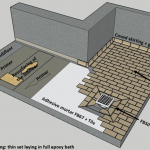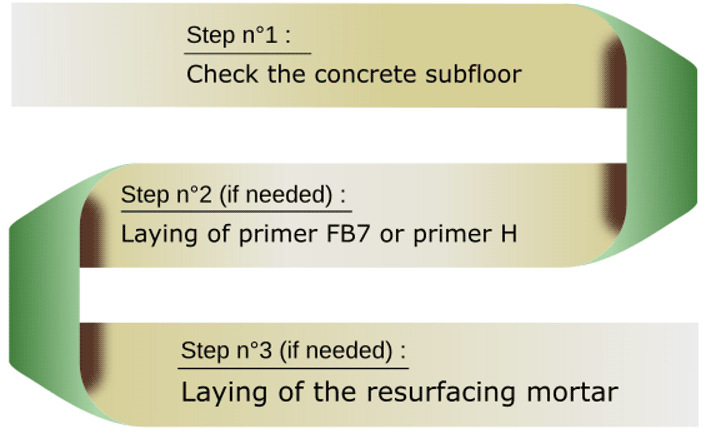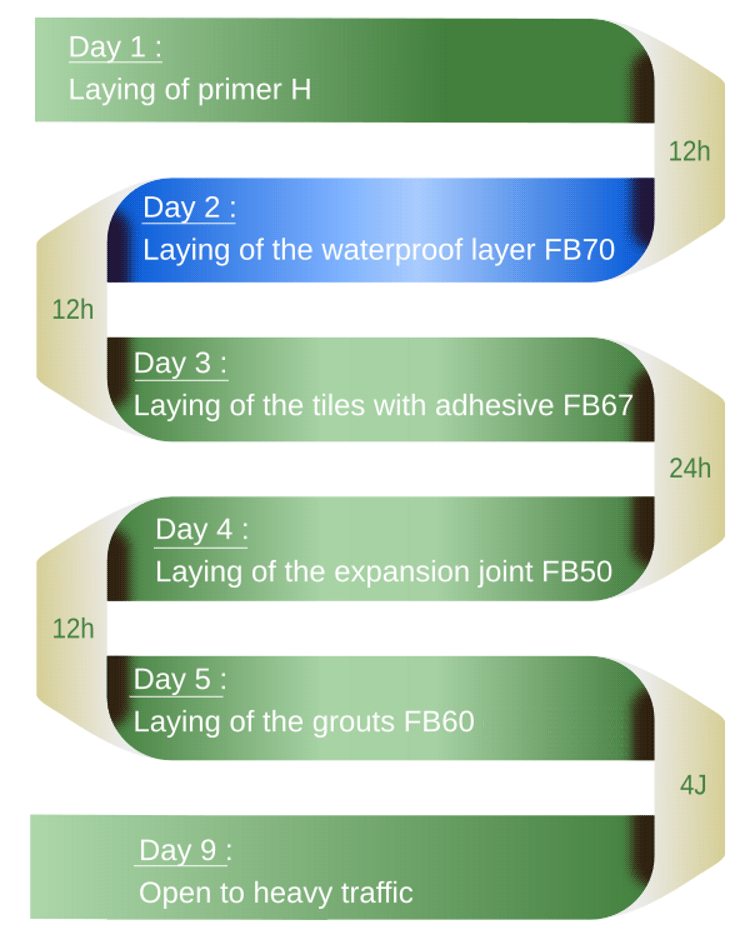 This type of laying presents a better resistance to both chemical and mechanical aggressions. It can be used for new work as well as for repairs, which must often be carried out without interrupting production. It is the quickest method for carrying out repairs, which limits the immobilization of the areas (e.g. over a weekend provided that the requirements concerning humidity, temperature and other specificities of the products used are respected).
This type of laying presents a better resistance to both chemical and mechanical aggressions. It can be used for new work as well as for repairs, which must often be carried out without interrupting production. It is the quickest method for carrying out repairs, which limits the immobilization of the areas (e.g. over a weekend provided that the requirements concerning humidity, temperature and other specificities of the products used are respected).
This laying is recommended for industrial floors exposed to temperature and humidity variations, chemical attacks and structural deformations, such as manufacturing workshops in the chemical industries, pharmaceutical or food industries, industrial kitchens, etc. In case of laying on floors where deformations or deflections may be important, lay on a flexible layer of polyurethane type FB70. This layer is 2 to 3 mm thick and ensures the waterproofing of the construction.
Our sales team remains at your disposal to elaborate a prescription adapted to your site according to your specific needs or for any technical question.




